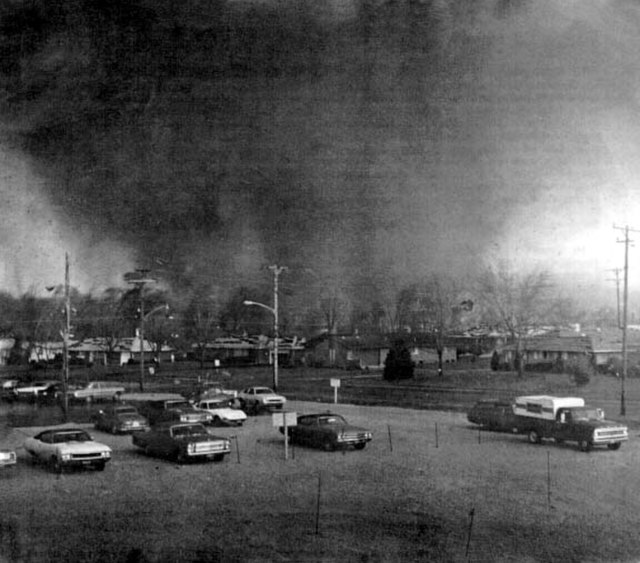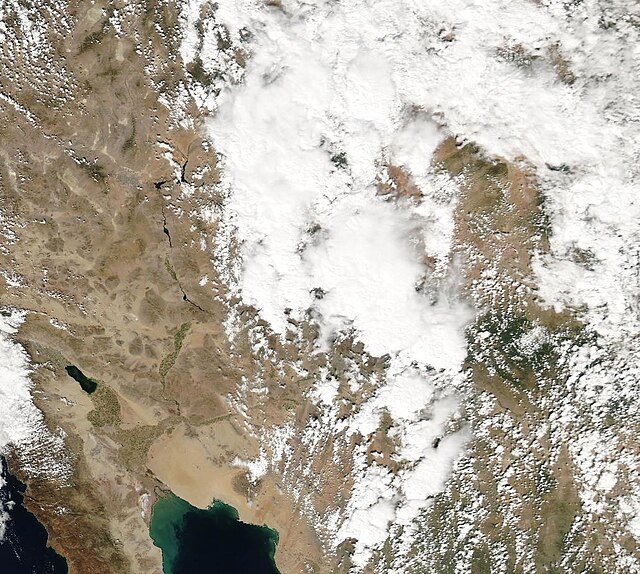The 1974 Super Outbreak was the second-largest tornado outbreak on record for a single 24-hour period, just behind the 2011 Super Outbreak. It was also the most violent tornado outbreak ever recorded, with 30 F4/F5 tornadoes confirmed. From April 3–4, 1974, there were 148 tornadoes confirmed in 13 U.S. states and the Canadian province of Ontario. In the United States, tornadoes struck Illinois, Indiana, Michigan, Ohio, Kentucky, Tennessee, Alabama, Mississippi, Georgia, North Carolina, Virginia, West Virginia, and New York. The outbreak caused roughly $843 million USD in damage, with more than $600 million occurring in the United States. The outbreak extensively damaged approximately 900 sq mi (2,331 km2) along a total combined path length of 2,600 mi (4,184 km). At one point, as many as 15 separate tornadoes were occurring simultaneously.
The tornado near Depauw, Indiana.
The Xenia tornado tearing through the southeast Pinecrest Garden district.
A view of the destroyed Presbyterian Church in Monticello.
The tornado approaching the city of Madison.
A tornado outbreak is the occurrence of multiple tornadoes spawned by the same synoptic scale weather system. The number of tornadoes required to qualify as an outbreak typically are at least six to ten, with at least two rotational locations or at least two supercells producing multiple tornadoes.
Dozens of supercells over Northern Arizona that caused a tornado outbreak on October 6, 2010





